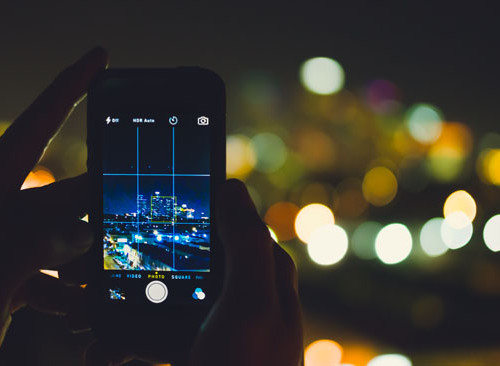Savvy companies are getting better results by opting for visual messages to drive responses from customers via a mobile platform.
Marketers appear to have forgotten that visual is the epicenter of communication. Visuals are processed 60,000 times faster than text. Visuals rapidly affect our emotions and this in turn quickly tunes into our decision making.
The power of visuals is no secret to marketing and advertising departments. Billions are spent every year seeking out the right imagery to entice us to buy products and services. They just seem to have gone of piste with text for a while. But visually-based marketing is now coming back with a vengeance. Why? Because they have quickly learned that nothing has the ability to influence like an image.
Yes, text/SMS does what it says on the tin. It delivers personalised, localised, context-specific information. It is short, sharp and succinct. But by adding a visual you get a far more powerful and memorable message on screen.
A shift to visual online interaction
Social media has shifted to the world of images. Facebook, Twitter and blogs have become far more visual. We’ve seen multi-media microblogs pop up on the likes of YouTube. So it was pretty much inevitable that we would see image-based social media networks pop up such as Instagram and Pinterest. After all – images can communication to anyone in any location, regardless of language. It is little wonder that Pinterest claims that a little over two-thirds of the organic content users are discovering on the site comes from businesses.
Facebook isn’t one to miss a visual trick either. At the F8 Facebook Developer Conference in San Francisco earlier this year, the company’s founder Mark Zuckerberg underlined the power of visuals in his keynote, where immersive content was the hot topic. “If you look back at Facebook five years ago, most of the content that people shared was text — status updates and wall posts. Now, it’s photos. If you fast-forward five years, it’s going to be video. If you look even further beyond that, it’s probably going to be more immersive content like VR and AR,” he said.
What is on the menu?
Visual has a major impact on usability and so called choice architecture, which highlights the different ways choices can be given to consumers and how it impacts their decision making process. Most menu systems include 1-4 boxes, with a ‘blind’ set of options i.e. the user has to make their first choice before they are presented with the second. With a visual presentation, users can actually see what the choice is and make a ‘touch decision’ – a core principle in visual push messaging. For example, if a customer wants to book a restaurant, the user can move the slider along to all the time slots available. To make the reservation they simply drag it and take their finger off.
‘Touch decision’ can be used in any number of ways. Take for example a customer satisfaction survey. Many mobile surveys don’t engage consumers and they switch off quickly. Add in visual and you have a very easy to use format of ‘yes, no, give me a score’: press a button, move the slider, and it is complete. There is nothing complicated about achieving this feedback. You simply send out an SMS message with a smart link embedded in it. The landing page will have the widest distribution because it has been delivered by an SMS, it will open on any smartphone (and if you don’t have a smartphone, it will still give you a prompt message asking you to call or respond by SMS).
It is little surprise that the capture rate for customer feedback using visual push technology is impressive – with survey response rates reported at over 20%.
One Touch Decision
Delivering marketing messages has never been more difficult. Connected consumers may be on the move, time starved and have a short attention span. Visual is the new language of the consumer. If you aren’t leveraging visuals it is going to be very difficult to take on board your message at any level.
With many consumers feeling totally burned out by the mountain of data and ads that hit them on a daily basis, the most innovative marketers are taking the opposite route and paring down their campaign messages. This is where a strong image can really win the hearts and minds of consumers.
Images on social media get far more engagements than links or text. Images on websites are more likely to be shared. So visual content on text messaging, giving consumers an easy palatable snapshot just has to be smart business.






